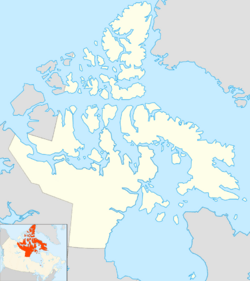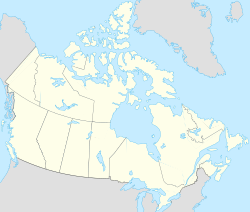Blaze Island facts for kids
| Geography | |
|---|---|
| Location | Coronation Gulf |
| Coordinates | 67°52′35″N 115°10′50″W / 67.87639°N 115.18056°W |
| Archipelago | Canadian Arctic Archipelago |
| Administration | |
| Territory | Nunavut |
| Region | Kitikmeot |
| Demographics | |
| Population | Uninhabited |
Blaze Island is a small island located in the cold, northern part of Canada. It sits within Coronation Gulf, a large body of water, specifically in an area called Richardson Bay. You can find it south of a much larger landmass known as Victoria Island. This island is part of the Kitikmeot Region in Nunavut, which is one of Canada's three northern territories.
Blaze Island is currently uninhabited, meaning no people live there permanently. It is one of many islands found in the vast Canadian Arctic Archipelago.
Contents
Discover Blaze Island's Location
Blaze Island is tucked away in the western part of Coronation Gulf. This gulf is an arm of the Arctic Ocean, located in the northern part of North America. Being in the Kitikmeot Region of Nunavut means it's in a very remote and often frozen part of Canada.
Where is Blaze Island Exactly?
To get a better idea of where Blaze Island is, imagine looking at a map of northern Canada.
- It's south of Victoria Island, which is one of the largest islands in the world.
- It's in Richardson Bay, a smaller bay within the larger Coronation Gulf.
- It's part of the Canadian Arctic Archipelago, a huge group of islands in the Arctic.
Nearby Places and Islands
Blaze Island isn't alone in this part of the Arctic. There are several other islands nearby. These include:
The closest community to Blaze Island is Kugluktuk. This town, once known as Coppermine, is located on the mainland. It's about 6.9 kilometers (or just over 4 miles) to the southwest of Blaze Island. Kugluktuk is a small, vibrant community in Nunavut, home to many Inuit people.
Life in the Arctic: Uninhabited Islands
Blaze Island is an example of an uninhabited island in the Arctic. Many islands in this region are uninhabited due to the harsh climate and remote location.
- Cold Climate: The Arctic experiences very cold temperatures for most of the year.
- Remote Location: These islands are far from major cities and towns, making them difficult to reach and live on.
- Wildlife: While people don't live on Blaze Island, it might be a home or a stopover for various Arctic animals. This could include birds, seals, or even polar bears.
These uninhabited islands play an important role in the Arctic ecosystem. They provide natural habitats for wildlife and are often untouched by human development. They are also important for scientific research, helping us understand the unique environment of the Far North.



